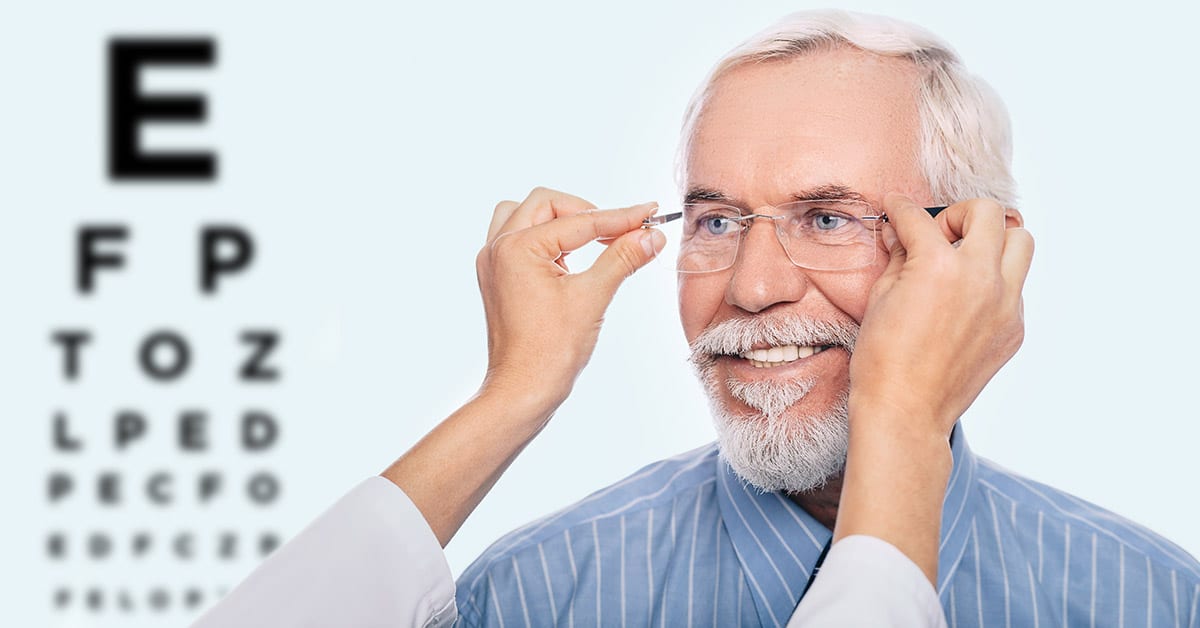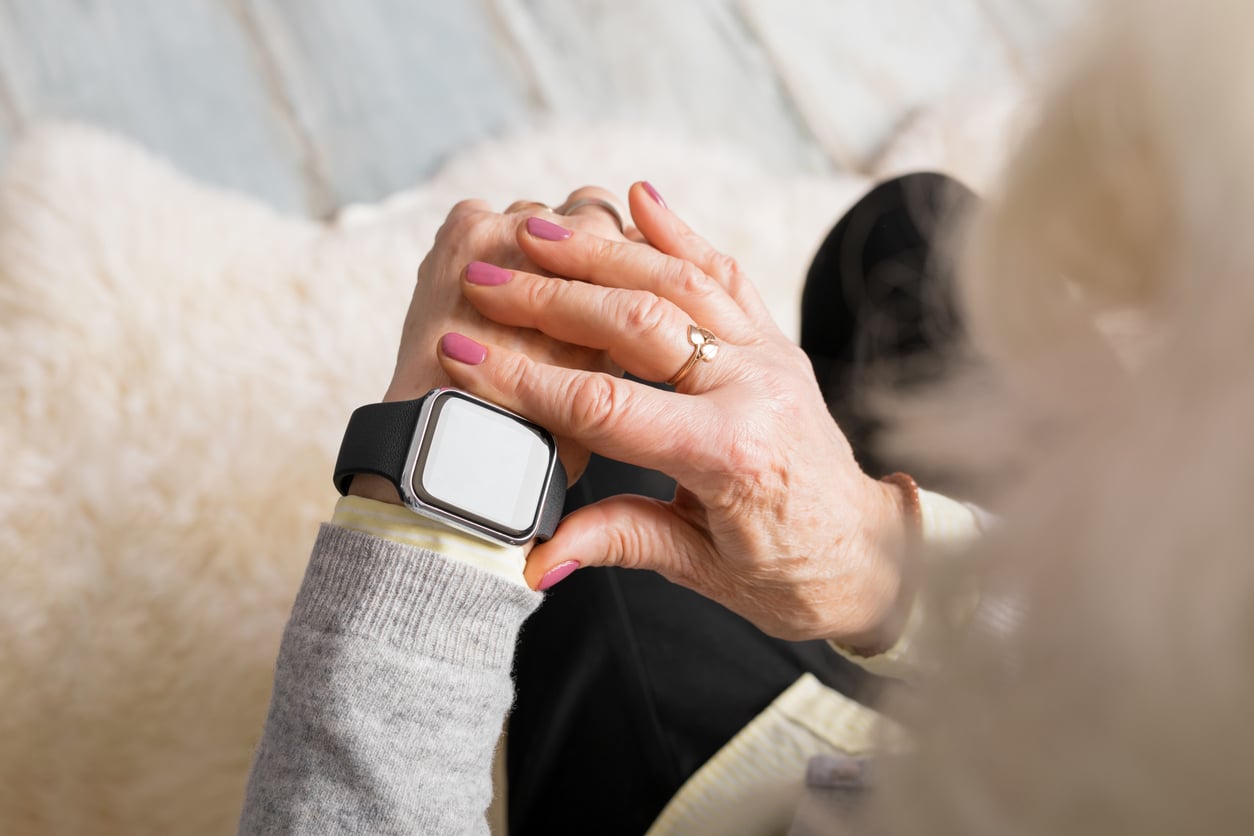As we age, we may develop conditions that make it harder to participate in day-to-day life. One of these is low vision.
What is low vision?
The National Eye Institute (NEI) defines low vision as any visual impairment “that makes it hard to do everyday activities” that “can’t be fixed with glasses, contact lenses, medicine or surgery.” You may have low vision if you don’t see well enough to drive, recognize faces, recognize faces, distinguish colors or see TV or device screens clearly.1
If you or a loved one is experiencing any of these challenges, schedule an appointment with your primary care provider. This is important to determine if the symptoms are possible signs of an underlying health issue, to discuss interventions to reduce frustration and fall risk and get a referral to a specialist if necessary.
What causes low vision?
Injury and disease are the most common causes of low vision and vision loss in older adults. Let’s take a look at the four most common eye diseases that lead to low vision:
Age-Related Macular Degeneration (AMD)
AMD is the leading cause of vision loss among older adults in the United States, according to NEI data, with more than 11 million people living with the disease.2 The risk of developing AMD is higher for people who:
- Are over 55
- Have a family history of AMD
- Are white/Caucasian
- Smoke/vape
Although AMD usually occurs in both eyes, some people have it in only one. AMD is hard to notice in its early stages. As it progresses, however, vision changes become more noticeable, including:
- Mild blurriness in central vision that becomes larger
- Trouble seeing in low light
- Straight lines looking wavy or crooked
- Blank spots
- Colors appearing less vivid
Seniors are often unaware they may have AMD until it’s detected in an eye exam, which is why it’s crucial to get an eye exam at least annually.
Treatment depends on the type and stage of the disease and can involve supplements, injections and laser therapy:
Intermediate AMD in one or both eyes is often treated with dietary supplements called AREDS 2, which contain concentrated amounts of vitamins and minerals that can slow the disease’s progress. These are available over the counter, but it’s important to discuss taking these or other supplements with a medical professional.
Wet AMD treatments include:
- Medicines called anti-VEGF drugs that the doctor injects into your eye
- Photodynamic therapy (PDT), a combination of injections and laser treatment
There’s no treatment for early AMD or for late-stage dry AMD. The NEI notes that you can improve overall eye health by eating healthy, participating in regular exercise and quitting smoking.
Diabetic Retinopathy (DR)
According to the CDC, approximately 4.2 million adults have DR and 655,000 have vision-threatening DR3, an eye disease caused by high blood sugar that damages the part of your eye that detects light. Although anyone living with diabetes can get diabetic retinopathy, the NEI notes that the risk is higher for people who4:
- Have had diabetes for a long time
- Developed gestational diabetes during pregnancy
- Have high blood pressure or high cholesterol along with diabetes
Because DR can develop slowly, there may not be many early symptoms, though you may notice changes in vision like having trouble seeing near or far. As it progresses, the blood vessels may start to bleed into the gel-like fluid filling our eyes, causing dark, floating spots or streaks that look like cobwebs. If this happens, contact your healthcare provider immediately because it could cause serious conditions, including:
- Retinal detachment, when scarring from bleeding pulls the retina away from the back of your eye.
- Diabetic macular edema, which causes blurred visions and impacts about 1 in 15 people with diabetes.
- Neovascular glaucoma, which blocks fluid from draining out of the eye.
People living with diabetes must get a comprehensive dilated eye exam at least once a year, even if their vision is good. There is no way to undo the damage done by DR, so starting treatment early is key to keep vision from getting worse. Treatments include injections, laser treatments and surgery.
Glaucoma
Glaucoma is a group of eye diseases that damage the optic nerve, potentially causing vision loss or blindness. The most common type in the U.S., according to the NEI, is open-angle glaucoma. Anyone can get glaucoma, but the risk is higher for people who:5
- Have a family history of glaucoma
- Are over 40 and Black
- Are over age 60, particularly of Hispanic/Latino heritage
Glaucoma symptoms start so slowly that you may not notice them. Half the people with the disease aren’t aware they have it. Vision loss occurs gradually, beginning with side vision, especially on the sides closest to your nose.
The only way to find out if you have glaucoma is to get a comprehensive dilated eye exam. There’s no cure for glaucoma, but early treatment can often stop the damage and protect your vision. Therapies include medication (usually eye drops), laser treatment and surgery. Getting treatment early is key. It won’t reverse damage, but it can reduce the likelihood it gets worse.
Cataracts
NEI data show that more than half of all Americans 80 or older either have cataracts or have had surgery to get rid of them.6 Cataracts, which can occur in either or both eyes, arise when the proteins in the lens of your eye break down and clump together and create a cloudy area on your lens. They are a natural part of aging and can also be caused by injury.
The people most at risk for cataracts are older adults who:
- Have certain health problems, like diabetes
- Smoke
- Drink too much alcohol
- Have a family history of cataracts
- Have had an eye injury, eye surgery or upper body radiation treatment
- Have spent a lot of time in the sun
- Take steroids
Like other eye diseases, cataracts develop slowly and it may take time to notice symptoms, such as:
- Clouded or blurred vision
- Colors that are faded
- Reduced ability to see well at night
- Lamps, sunlight, or headlights seem too bright or have a halo
- Double vision
Because these symptoms are similar to those of other eye problems, see a medical professional if you experience any of them. Surgery is the most successful way to remove cataracts and address the symptoms – and is one of the most common surgical procedures in the U.S.
Low vision is common, but it doesn’t have to keep you or your loved one from aging well and enjoying life. Talk to your primary care physician about your risk of eye disease and be honest about symptoms. The sooner eye issues are addressed, the more likely you can avoid or successfully manage low vision.
Don’t disregard professional medical advice, or delay seeking it, because of what you read here. This information is not intended as a substitute for professional consultation, diagnosis or treatment; it is provided “as is” without any representations or warranties, express or implied. Always consult a healthcare provider if you have specific questions about any medical matter, and seek professional attention immediately if you think you or someone in your care may be experiencing a healthcare condition or medical emergency.
1. https://www.nei.nih.gov/learn-about-eye-health/eye-conditions-and-diseases/low-vision. Courtesy: National Eye Institute, National Institutes of Health (NEI/NIH).
2. https://www.nei.nih.gov/learn-about-eye-health/eye-conditions-and-diseases/age-related-macular-degeneration
3. CDC – Diabetic Retinopathy Fact Sheet. https://www.cdc.gov/visionhealth/pdf/factsheet.pdf
4. https://www.nei.nih.gov/learn-about-eye-health/eye-conditions-and-diseases/diabetic-retinopathy
5. https://www.nei.nih.gov/learn-about-eye-health/eye-conditions-and-diseases/glaucoma
6. https://www.nei.nih.gov/learn-about-eye-health/eye-conditions-and-diseases/cataracts




